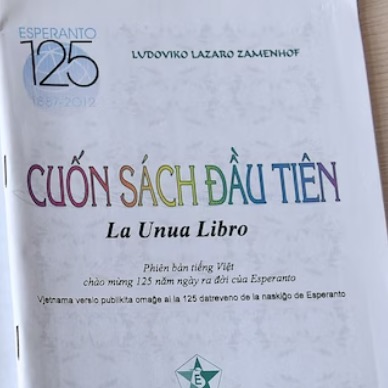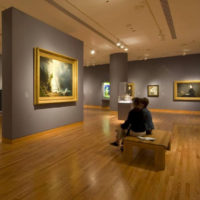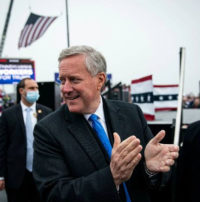Organization
Situated in the historic city of Salem, Massachusetts, the Peabody Essex Museum (PEM) is a premier cultural institution renowned for its diverse collection, engaging exhibitions, and innovative programs. PEM celebrates outstanding artistic and cultural creativity by collecting, stewarding, and interpreting objects of art and culture in ways that increase knowledge, enrich the spirit, engage the mind, and stimulate the senses through its exhibitions, programs, publications, media, and related activities. Founded in 1799, PEM is one of the oldest and most distinguished museums in the United States. PEM has firmly established itself as a hub of artistic and cultural exploration, attracting visitors from around the world. PEM aspires to create experiences that transform people’s lives by broadening their perspectives, attitudes, and knowledge of themselves and the wider world. It houses an extensive collection of art and cultural artifacts, spanning continents and centuries. PEM’s collection encompasses American, Native American, Asian, Oceanic, Maritime, African, and European art, as well as historic houses and grounds and the Phillips Library.
PEM is globally recognized, welcoming between 165,000 to 170,000 visitors annually. A pioneer in the acquisition, relocation, restoration, and interpretation of historic environments, PEM hosts more than 20 pre-Civil War buildings, including four National Historic Landmarks and many listed on the National Register of Historic Places. Yin Yu Tang, a 200-year-old Chinese house brought to the States and re-erected on PEM’s Salem campus, is housed adjacent to the museum. Current notable exhibitions include Studio Glass, a diverse selection of contemporary glass representing the work of more than 40 of the most influential glass artists from the 20th century to today, and On This Ground: Being and Belonging in America, a landmark ongoing installation that brings together the Native American, American and American Decorative Art in rich dialogue on the history of Native America and U.S. history. PEM houses the oldest ongoing collection of Native American art & culture in the Western Hemisphere. Beyond stewarding the collection through exhibitions and publications, PEM fosters and advances the next generation of Native American leaders in the cultural sector through the Native American Fellowship (NAF) program.
The Native American Fellowship program emerged more than 15 years ago as part of an Education through Cultural and Historical Organizations grant to fulfill the need of cultivating more Native American museum and cultural heritage professionals. PEM believes extensive, interconnected networks of family, community, and professionals are essential. Fellowships are open to rising graduate students and emerging and in-service cultural professionals, including persons of Native American, Alaska Native, Kānaka Maoli (Native Hawaiian), First Nations, Métis, and Inuit heritage; members of federally recognized tribes, consistent with the distinctions established under federal law. As well, PEM welcome applications from individuals who reside on Native or tribal lands; and artists and scholars whose work and/or study contributes to the artistic traditions, research and preservation of Native American art, culture and history, and who demonstrate consistent commitment through their life and their work to the purpose of the program and the cultural and educational mission of the museum. The program hosts approximately four fellows every summer and two long-term fellows throughout the year.
Lynda Roscoe Hartigan is the Rose-Marie and Eijk van Otterloo Executive Director and CEO. PEM has a 2020-member board of trustees led by Jennifer Borggaard, Chair, and Jeffrey P. Beale, Vice Chair, and a staff size of approximately 250.
Community
Nestled on the scenic North Shore, Salem, Massachusetts, is a vibrant, thriving city that combines rich history with dynamic cultural and economic energy. Just 16 miles north of Boston, Salem offers easy access to world-class universities such as Harvard, MIT, and Boston University, while also serving as home to Salem State University, one of the largest state universities in Massachusetts. The city’s economy is resilient and growing, with stable commercial activity, low downtown vacancy rates, and a diverse, engaged population that contributes to innovation and entrepreneurship. With a population of roughly 44,200, Salem offers both opportunity and an exceptional quality of life.
Salem is a hub for arts and culture. Historic landmarks like the Salem Witch Museum and the House of the Seven Gables draw visitors from around the world. The Salem Theatre Company, and a host of festivals—including the Salem Arts Festival, Jazz & Soul Festival, and Film Festival—showcase the city’s thriving creative scene. Public art, rotating sculpture exhibits, and cultural events continue to invigorate the city’s neighborhoods, creating an inspiring environment for artists and professionals alike.
Designated as a Massachusetts Gateway City, Salem plays a vital role in the economic and cultural life of the North Shore, balancing historic preservation with forward-looking revitalization. Walkable neighborhoods, vibrant commercial districts, and modern placemaking initiatives make the city a welcoming, engaging place to live and work. With its unique mix of history, innovation, and proximity to Boston’s academic and professional sectors, Salem offers an ideal setting for creative, civic-minded professionals looking to make an impact while enjoying a rich, fulfilling lifestyle.
Source: beau.gov; salemma.gov; northshorealliance.org
Position Summary
The Program Director, Native American Fellowship (Program Director) will play a pivotal, non-curatorial role within the Curatorial Affairs Team, driving the vision, strategy, and execution of the Native American Fellowship Program. This dynamic position will lead the day-to-day operations of the fellowship program, overseeing all aspects of its administration while ensuring alignment with PEM’s mission and values.
Reporting to the Stuart W. and Elizabeth F. Pratt Curator of Native American and Oceanic Art and Culture, and Principal Advisor to the Native American Fellowship Program, the Program Director will encourage and advance the next generation of cultural leaders through sustained training of new fellows and expanded opportunities for alumni as they take on leadership roles in museums, cultural programs, and academia.
As a key ambassador for the program, the Program Director will serve as the central liaison between fellows, PEM staff, external partners, and Native communities and organizations across the U.S. and Canada. This role is essential in growing and sustaining meaningful relationships, promoting collaboration, removing barriers, and celebrating the artistic traditions, culture, history, and voices of Indigenous peoples within PEM’s fellowship program framework.
By overseeing the fellowship program’s objectives, timelines, and resources, the Program Director ensures that program goals, initiatives, and grant obligations are achieved with excellence, while upholding the program’s core values and advancing the museum’s broader priorities. This role is central to shaping the long-term impact and success of the fellowship program.
Roles and Responsibilities
Strategic Vision
- Develop and lead the strategy for the Native American Fellowship Program, including setting priorities, recruiting candidates through networking and outreach, designing and implementing program activities, and evaluating outcomes, while maintaining strong collaboration within the Curatorial and other PEM departments.
- Inspire transformative, dynamic, and culturally sensitive leadership experiences for participants in the program.
- Serve as the primary point of logistics contact for program fellows and provide emotional support to fellows while at PEM, helping to build a strong sense of community before, during, and after the fellowship at PEM.
- Foster, nurture, and manage connections among fellows, PEM staff, and external museum professionals.
- Embrace other strategic vision responsibilities as needed.
Team Leadership and Operations
- Plan and execute the scheduling and logistics of the residential program, ensuring seamless housing arrangements, travel, seminars, enrichment activities, supplies, and social events.
- Orchestrate the scheduling, recruitment, and selection of summer fellowship and long-term (12 to 24 months) appointments, while identifying strong mentors, projects, and leadership opportunities throughout the museum.
- Deliver presentations to the public and professional organizations on the fellowship program and represent PEM at social and professional events to help advance institutional objectives.
- Facilitate and identify networking opportunities on behalf of the program and alumni.
- Network and collaborate with colleague institutions and related training programs.
- Design and implement recruitment strategies, seeking highly visible avenues for program recruitment and advocacy.
- Cultivate and nurture alumni relationships, keep track of their professional developments, and provide support for career development when relevant.
- Execute and oversee the annual evaluation process, tabulate data, and reporting; collaborate as appropriate with other colleagues and departments on the development of longitudinal program evaluation.
- Elevate the fellowship program’s visibility and brand through dynamic marketing, PR, and educational content, leveraging traditional, non-traditional, and social media outlets while delivering compelling presentations to PEM staff, leadership, advisors, and the board.
- Build program brand and public communication with a variety of audiences using traditional, non-traditional, and social media outlets.
- Guide educational content for the website.
- Prepare and oversee an annual budget, providing detailed financial oversight to budgets and activities, including tracking and internal PEM reports and external reports to the Andrew W. Mellon Foundation, working closely with the Principal Advisor.
- Mentor and coach Summer and Long-term fellows, and program alumni as called upon.
- Attend conferences and/or symposia held in various locations in the U.S. and Canada.
- Embrace other leadership and operations responsibilities as needed.
Traits and Characteristics
The ideal Program Director is deeply people-oriented and passionately committed to the growth and success of the fellows and the fellowship program. They excel at building strong relationships and communicating effectively with a wide range of stakeholders, from fellows to museum leadership and external partners. Visionary and strategic, they are adept at planning, organizing, and prioritizing multiple initiatives while exercising empathy, diplomacy, and consistency. As a skilled mentor and coach, they inspire and support fellows’ and alumni development while keeping program operations, timelines, and goals on track with sharp time-management and organizational skills.
Other key competencies include:
- Project Management – The capability to identify and manage concurrent tasks and systems while leveraging resources and people’s talents, to obtain results.
- Diplomacy and Teamwork – The dexterity to effectively and tactfully handle difficult issues in a manner that demonstrates sensitivity and respects differences while modeling and cultivating a culture of collaboration, accountability, joy, and excellence.
- Personal Accountability and Planning/Organization – The potential to establish courses of action, to ensure that work is completed effectively while remaining answerable for one’s own actions.
- Interpersonal Skills – The ability to effectively communicate, build rapport, and relate to all kinds of people.
- Employee Development and Coaching – The capacity to inspire, mentor, and guide others, fostering their professional growth through supportive and impactful coaching.
Qualifications
A master’s degree in art history, anthropology, or cultural studies is preferred with an emphasis in Native American Studies; however, a bachelor’s degree holder who has an equivalent combination of education and experience is welcome. Extensive, demonstrable experience in program development, with a deep understanding of Indigenous cultures, gained through lived and/or professional experience, is a must. A minimum of three to five years of relevant museum or nonprofit management and implementation experience is required, particularly in overseeing training and/or professional development programs. Ideal candidates will have direct experience with the culture, language, and traditions of Indigenous communities.
Compensation and Benefits
This is an exempt, high level professional position with a full-time salary range of $75,900 to $94,957. Benefits include paid vacation time, sick time, parental leave, short-term and long-term disability, 401(A) and 403(b), health/dental/life insurance, and tuition assistance. PEM currently maintains a hybrid work schedule that requires regular in-person work at its Salem location and offices, as well as evening and weekend events and engagements. This is a 3-year grant-funded position, which is subject to a potential extension pending future grants and budget.
Applications and Inquiries
To submit a cover letter and resume with a summary of demonstrable accomplishments (electronic submissions preferred), please visit https://artsconsulting.com/opensearches/peabody-essex-museum-seeks-program-director-native-american-fellowship/
The Peabody Essex Museum is committed to diversity among its employees and encourages qualified candidates from all backgrounds to apply.





